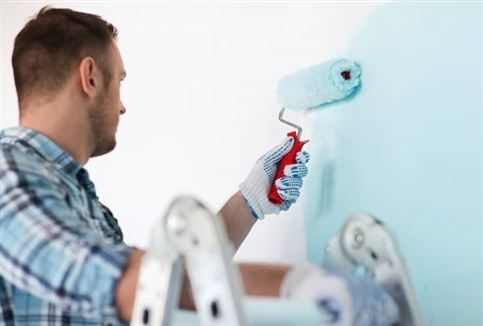A Guide To Using An FHA Streamline Refinance

Are you looking to refinance to lower your rate or change your term, but you don’t want to go through all the hassle? If you have an existing FHA loan, an FHA Streamline refinance could enable you to get the job done with less documentation and potentially no appraisal.
See recommended refinance options and customize them to fit your budget.
What Is An FHA Streamline Refinance?
An FHA Streamline refinance is a loan option allowing homeowners with an existing FHA loan to refinance for the purposes of lowering their rate or changing their term. Whereas a traditional FHA loan would require lenders to document income and assets fully, many clients qualify to have these waived. An appraisal may not be required either, expediting the process.
It’s important to note that this is only available for rate/term refinances of existing FHA loans. You cannot take cash out with an FHA Streamline.
See What You Qualify For
Home Purchase
Home Refinance
Tap Into Equity
What Are The Guidelines For An FHA Streamline Refinance?
There are several key requirements to qualify for an FHA Streamline refinance.
Must Have An FHA Mortgage
You can only do an FHA Streamline refinance if you have an existing FHA loan. Additionally, the FHA requires that the following time frames have passed:
- 210 days must have elapsed between the first payment due date on your prior FHA loan and the first payment due date on the new loan. The same timeline is true for your case number assignment date. Case numbers are a bit more complicated and we recommend talking to your lender.
- 6 months must have passed between the due date of the first payment on your prior mortgage and the application.
Mortgage Must Be Current
In order to qualify, you have to be current on your existing FHA loan. For the purposes of this loan option, that means the following:
- No 30-day late payments in the 6 months leading up to your application and until the loan is funded.
- No more than one 30-day late payment in the year prior to application through the closing of your new refinance.
- These guidelines apply to all mortgages in the client’s name.
Must Provide A Net Tangible Benefit
The FHA has very specific requirements regarding a net tangible benefit that clients must see from doing an FHA Streamline Refinance. The requirements around the benefits depend on the advantage you get from the refinance. While we’ll discuss these in more depth below, here’s a broad overview of potential benefits:
- Shorter repayment term
- Lower interest rate
- Lower monthly payment
- Going from an adjustable-rate mortgage (ARM) to a fixed-rate mortgage
You’ll often achieve multiple benefits through an FHA Streamline.
What Kind Of FHA Streamline Refinance Rates And Terms Are Available?
In addition to standard 15-year or 30-year terms, you can get an FHA loan with a 20- or 25-year term. The rates are going to be similar to the prevailing rate for someone with your qualifications on other FHA loans. However, know that there may be some special restrictions for your FHA streamline depending on the length of the loan.
Shorter Loan Term
If the loan term is shorter, you save interest over the life of the loan by paying it off sooner. However, there are a couple of stipulations if you’re taking 3 or more years off the term:
- Your current mortgage payment including mortgage insurance premium (MIP) can’t go up by more than $50.
- If you’re going from a fixed-rate mortgage into another fixed-rate mortgage, the combined mortgage rate and mortgage insurance premium rate have to be lower than your original loan. If you’re going from an ARM into a fixed-rate loan, the combined rate can’t be more than 2% higher than it was for the prior loan.
Loan Term Of Same Length Or Longer
If you’re doing anything other than shorten the term by 3 years or more, FHA assumes that your goal is to either lower your interest rate or lower your payment. Here are the guidelines you need to be thinking about.
If you’re trying to lower your payment, one of the primary ways of doing that would be to extend your term, but you can’t go more than 30 years or more than 12 years past the remaining term in your current loan, whichever is less.
If you had 13 years left, the maximum term of your new loan would be 25 years. You’ll also be limited by the fact that the FHA only offers loans in 5-year increments between 15 and 30 years. Because the terms are in 5-year increments, the maximum term you could go to if you had 12 years remaining on your current loan would be 20 years.
Beyond that, there are special interest rate restrictions here as well:
- Fixed to fixed: The interest rate has to be at least 0.5% lower than the prior combined rate between the interest rate and the mortgage insurance factor.
- Fixed to ARM: The new combined rate has to be at least 2% below the prior one.
- ARM to fixed: The new combined rate can’t be more than 2% higher than the existing one.
- ARM to ARM: Your new rate has to be at least 1% lower than the old one.
What Are The Pros Of An FHA Streamline Refinance?
Doing an FHA Streamline can have several benefits for a borrower.
Lower Monthly Payment
One of the primary reasons for doing an FHA Streamline is to lower your monthly payment. You can do so by getting a lower rate and/or adding years to your term.
Refinance If Underwater
Being underwater on your mortgage means you owe more on your mortgage than the home is worth. This can happen if the market drops after you bought your house, but before you’ve had time to build up significant equity.
Most mortgage loans require you to have a minimum amount of equity to refinance. This isn’t the case if you’re currently in an FHA loan and doing an FHA Streamline. You can refinance even if you’re upside down on the loan to lower your rate or change your term. Some lenders may have restrictions on how far underwater you can be, so check with an expert.
May Not Require Credit Or Income Check
There are instances in which the FHA doesn’t require a credit report check or income documentation. The reasoning here is that you’re already current on your existing FHA mortgage and an FHA Streamline is meant to help you obtain a more affordable payment, so there are less checks based on your payment history.
Depending on the circumstances surrounding your loan, you may have to do a credit qualifying FHA streamline vs. a noncredit qualifying one. Credit qualifying streamlines require documentation of income and assets, as well as your credit score.
In addition, lenders may have their own policies regarding checking credit and income, so consult your loan officer.
May Not Require Appraisal
In many instances, no home appraisal is required on an FHA Streamline. This has to do with the fact that they’re not concerned with home value because there are no equity limits. Lenders and states may have their own guidelines on this.
Faster Time To Close
Because there’s often no appraisal and the documentation is drastically reduced in many cases, this speeds up the underwriting process. That means you can get into a lower rate or payment than you could by going through a full documentation refinance.
Get matched with a lender that will work for your financial situation.
What Are The Cons Of An FHA Streamline Refinance?
There are many benefits, but also a few downsides.
Closing Costs
When you refinance any mortgage, a good general rule is that closing costs will be in the range of 2% – 6% of the loan amount. They may be lower for an FHA Streamline because there’s no appraisal necessary in many cases, but it’s still something to plan for. If they aren’t paid upfront, they must be built into the loan amount.
No Cash-Out Refinance
An FHA Streamline loan can only be used to lower your rate or change your term. That means you can’t use it to do a cash-out refinance. This isn’t the loan option for you if you’re looking to consolidate debt or take out cash to do home improvements.
Mortgage Insurance Premiums
If you put down 10% or more on your original loan, mortgage insurance premiums (MIP) stay for 11 years. Otherwise, they exist for the life of the loan. When you refinance with an FHA Streamline, the clock resets. So it’s something to be aware of.
FHA MIP was updated in 2023. The current annual MIP rates are anywhere between 0.15% and 0.75% of your loan amount for annual MIP, depending upon the term of your mortgage, your equity and your loan amount. The upfront MIP is 1.75%. This can be built into the loan amount.
How To Apply For An FHA Streamline Refinance
If you’re interested in an FHA Streamline, here’s what you need to know to apply.
1. Find An FHA-Approved Mortgage Lender
In order to get an FHA Streamline, you have to work with an FHA-approved lender. However, you don’t have to work with the lender who originally did your first FHA loan. You can shop around for a better deal.
2. Provide The Lender With The Necessary Paperwork
While it is true that there is less paperwork usually needed to get an FHA Streamline, there still are certain requirements like a mortgage statement and having the ability to see the note because the payment and the note rate help determine your net tangible benefit. Whether you need it all or not, you should have the following documentation ready:
- Current mortgage statement
- Current FHA mortgage note outlining the loan’s details
- Settlement statement or deed of trust
- Homeowners insurance information
- Employment verification
- Bank statements from the past 2 months
- 2 years’ worth of tax returns
- 2 years’ worth of W-2s and/or 1099s
3. Complete The Underwriting Process
The mortgage underwriting process is designed to make sure you qualify for the loan. Although it’s often faster with an FHA Streamline, a lender is still going to do the checks. You can speed up the process by promptly providing any information asked for.
Is An FHA Streamline Refinance Right For You?
An FHA Streamline is right for you if you’re looking to lower your payment or your rate on your existing FHA loan. Alternatively, you might be looking to go from an ARM to a fixed-rate mortgage.
The real key to whether this makes sense for you is if you have savings after the closing costs. If the closing costs don’t make sense, you might be better off trying to put extra money toward the principal on your current payment to pay off early and save interest that way.
FHA Streamline Refinance FAQs
Now that we’ve touched on everything you need to know about an FHA Streamline, let’s answer some other questions you may have.
Will an FHA Streamline refi affect my credit score?
Your credit score is affected when you do an FHA Streamline refi because lenders have to do a hard inquiry during the loan process showing you applied for new financing. The good news is it should bounce back if you make your payments on time and maintain other good credit habits.
Can I use an FHA Streamline more than once?
You can use an FHA Streamline as many times as you can document a net tangible benefit. You just have to make sure there are at least 210 days between the first payment on your new mortgage and the first payment on your prior mortgage.
The same 210-day timeline applies between your first payment on the prior mortgage and the case number assignment date. Additionally, there needs to be 6 months between your first payment date and when you apply.
Can I use more than one FHA Streamline if I own multiple properties?
In general, the answer to this question is no. That’s because most of the time, you can only have an FHA loan for a primary residence. In the rare case where you have multiple FHA loans, this could be possible.
The Bottom Line
An FHA Streamline is designed to let people lower their rate or their payment without regard to how much equity they have. Often, credit and income checks aren’t required and neither is an appraisal. You do have to have existing FHA loan and you can’t cash out equity.
See recommended refinance options and customize them to fit your budget.











